MP Board Solutions for Class 10 Science Chapter 6 – Control and Coordination
MP Board Solutions for Class 10 Science Chapter 6 – Control and Coordination are essential for understanding key Biology concepts in the MPBSE curriculum. These well-structured answers help students grasp topics like nervous system, hormones, reflex actions, and plant responses. Designed as per the latest syllabus, these solutions strengthen conceptual clarity and improve exam preparation. Ideal for revision and practice, they encourage logical thinking and scientific understanding, making them a valuable study tool for scoring well in Class 10 Science exams.
MP Board Solutions For Class 10 Science – Control and Coordination – Exercise Images
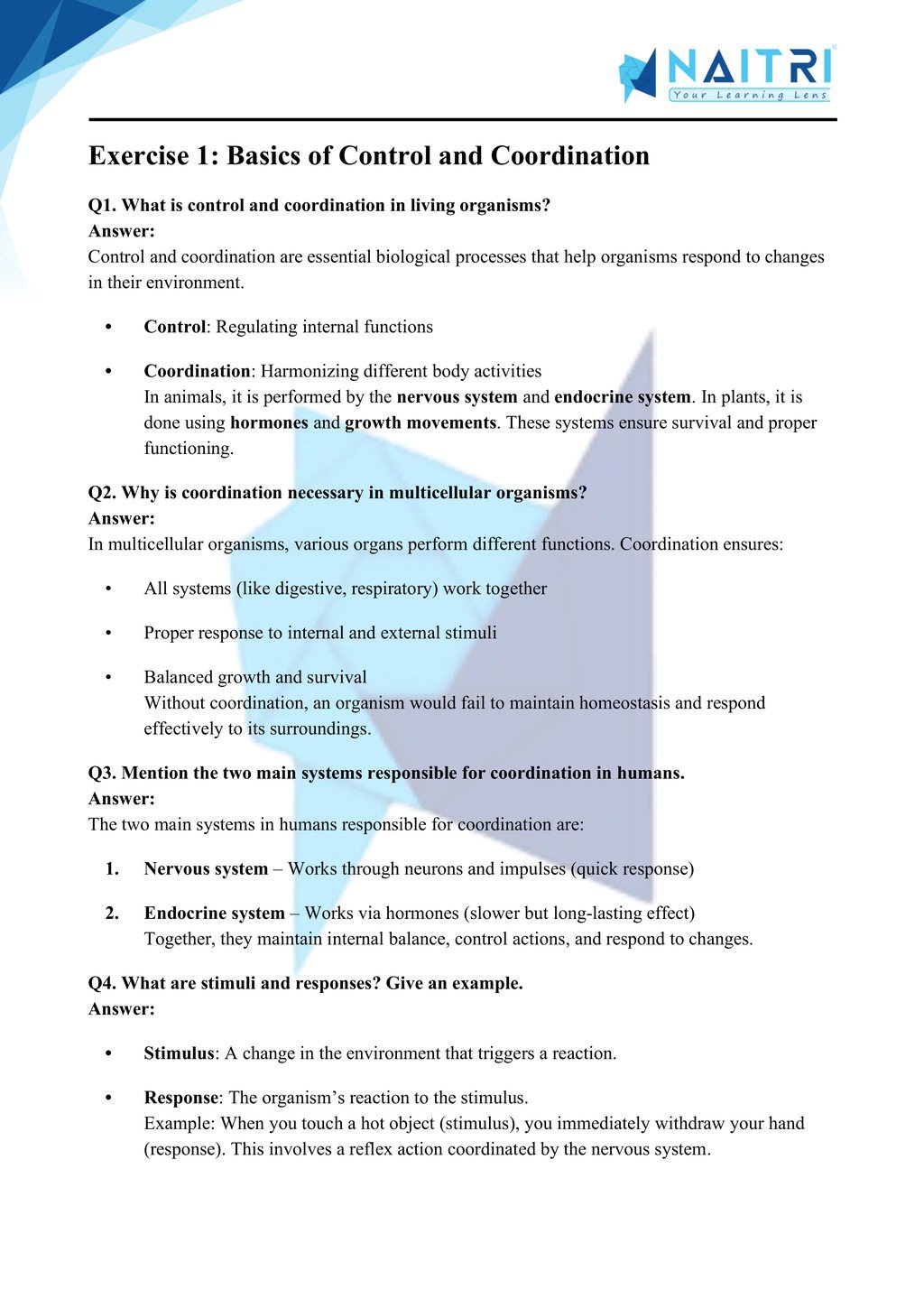
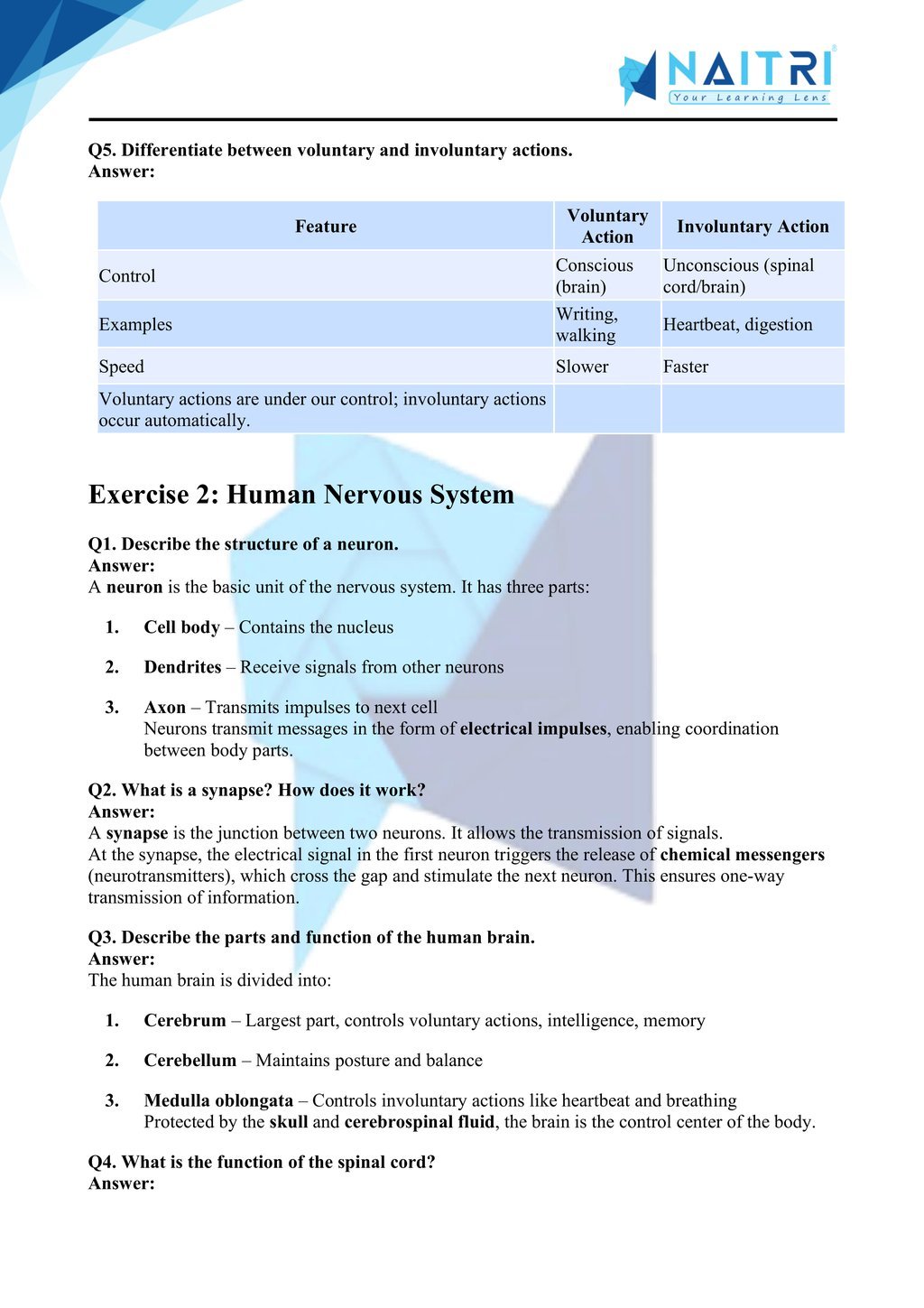
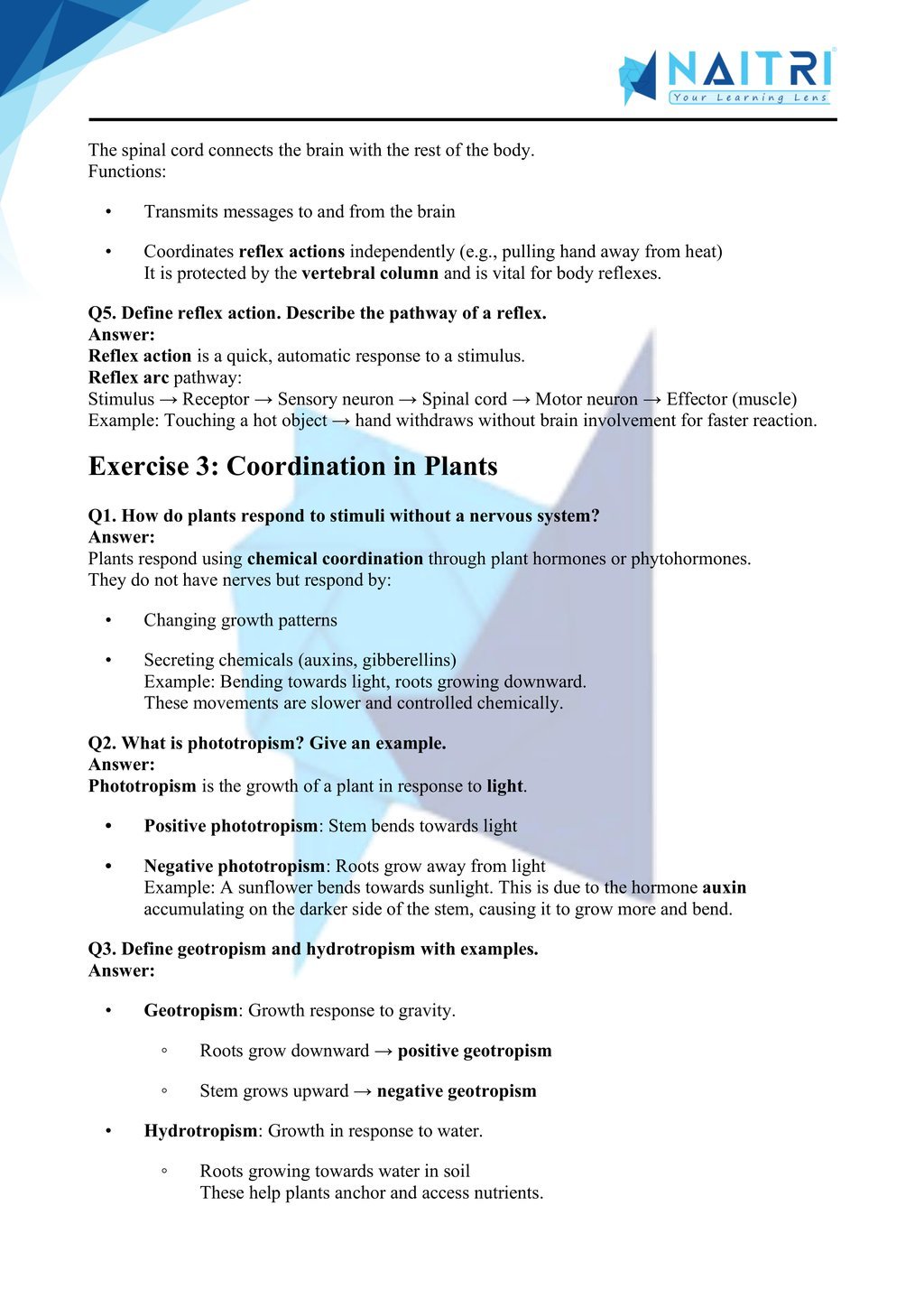
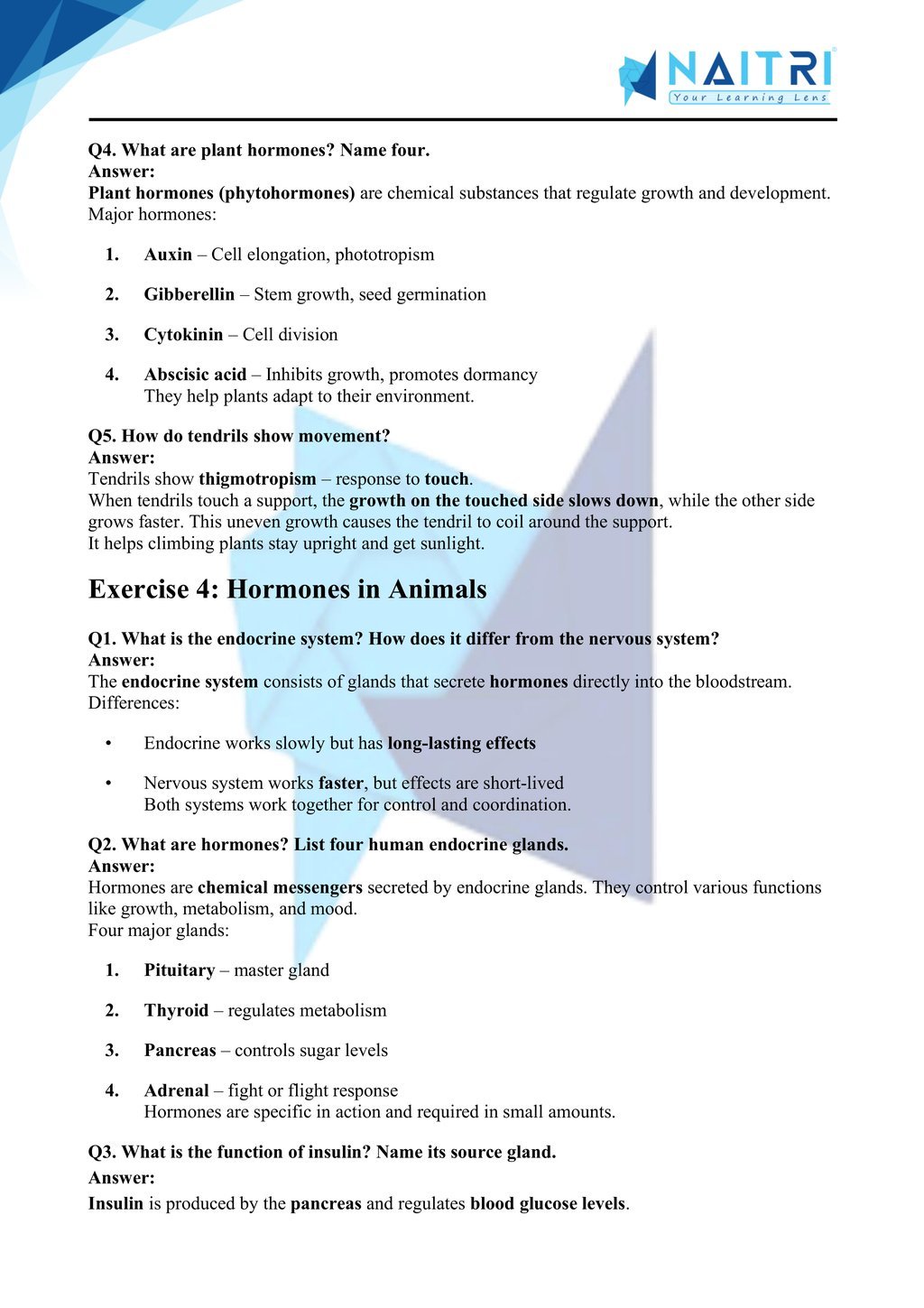
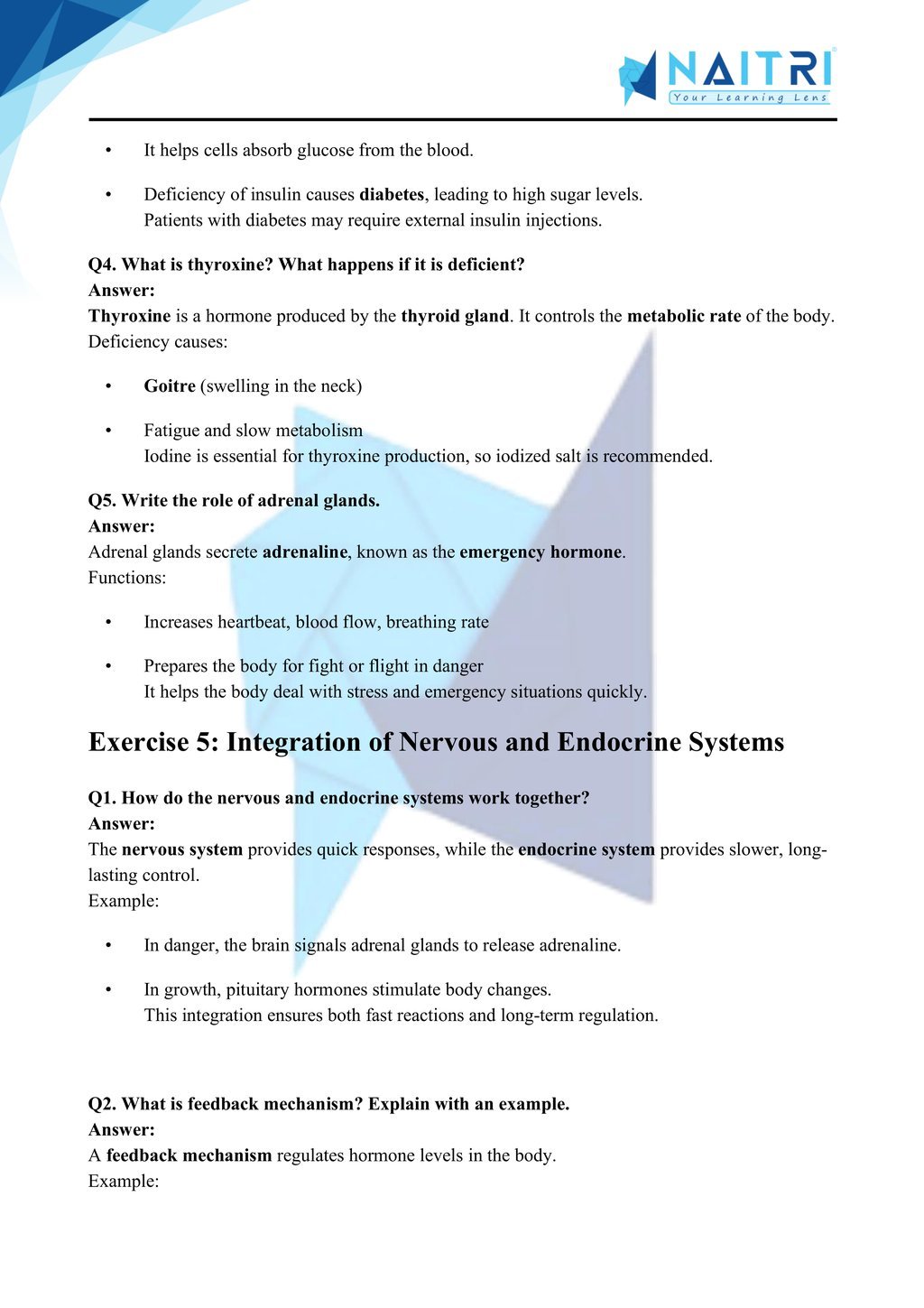
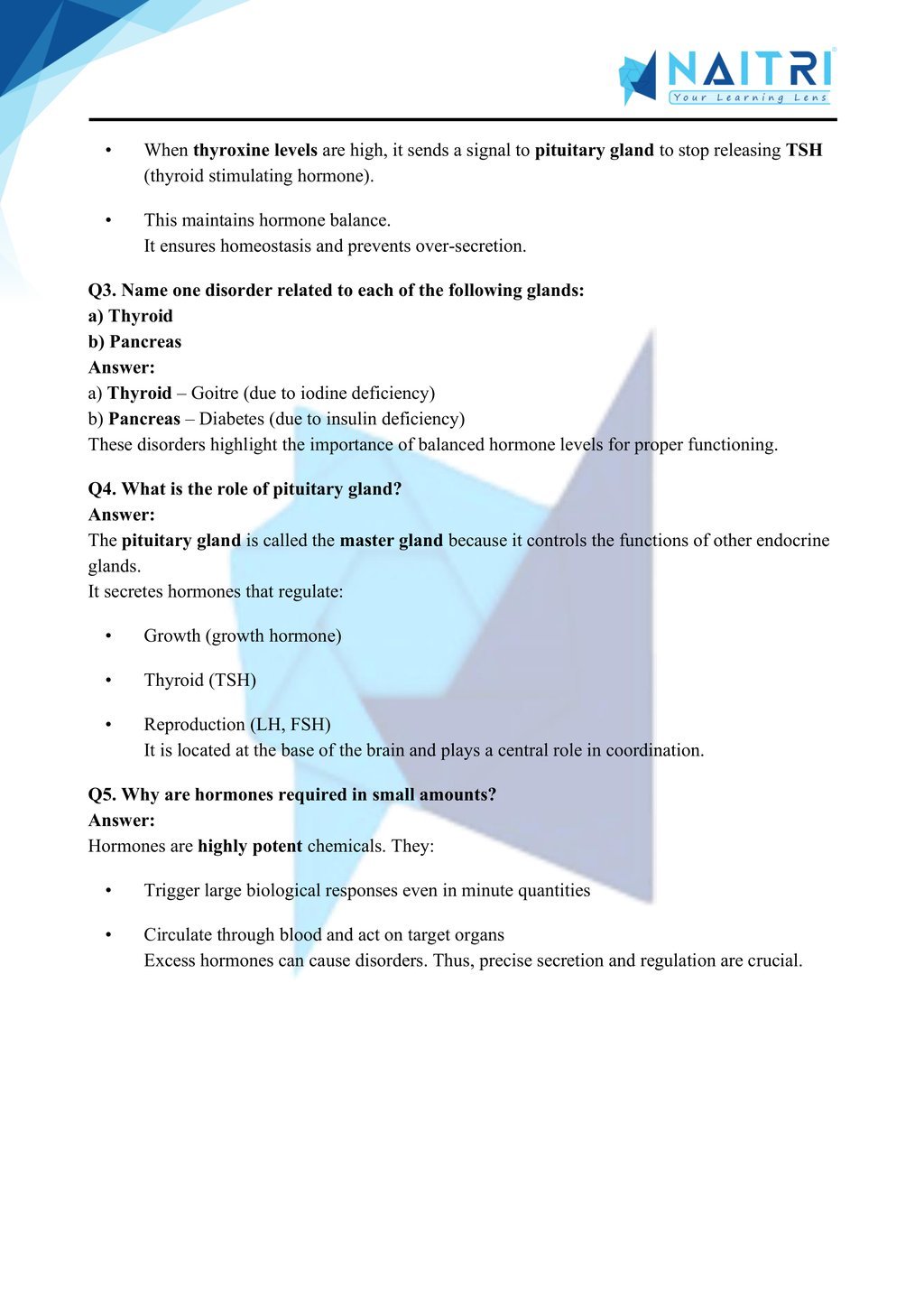
Experience Science Like Never Before – With AR!
Understanding Control and Coordination is now more exciting and immersive! With the NAITRI App, you can explore complex science concepts through Augmented Reality (AR). Watch nerves signal, hormones flow, and brain sections activate — right in front of you. Our AR-powered lessons make learning interactive, 3D, and fun, helping you retain concepts better and enjoy every topic.



Visualize . Interact . Understand . The future of learning is here
Control and Coordination – Important Questions with Answers
1. Define coordination in living organisms and explain why it’s necessary.
Answer: Coordination refers to the orchestrated interaction among different body parts or systems, enabling organisms to respond effectively to internal and external changes. It is vital for maintaining homeostasis and survival in varying environments.
2. Name the two main systems involved in coordination in animals.
Answer: The nervous system and the endocrine (hormonal) system. The nervous system offers rapid responses through electrical impulses, while the hormonal system provides slower but sustained control via chemical signals.
3. What are neurons? Describe their main parts and functions.
Answer: Neurons are specialized nerve cells carrying electrical impulses. They consist of a cell body (contains nucleus), dendrites (receive signals), and an axon (transmits signals), facilitating rapid communication between body and brain.
4. Explain synapse and its role in nerve impulse transmission.
Answer: A synapse is the tiny gap between two neurons or between a neuron and effector cell. Electrical impulses trigger release of neurotransmitters in the synapse to transmit signals chemically to the next cell.
5. Differentiate between sensory and motor neurons.
Answer: Sensory neurons carry information from receptors (e.g., skin, eyes) to the central nervous system. Motor neurons transfer signals from the brain or spinal cord to effectors like muscles or glands, causing action or secretion.
6. Describe reflex action with an example.
Answer: A reflex is a rapid automatic response to a stimulus, processed via spinal cord bypassing the brain. Example: The knee-jerk reflex elicited when a doctor taps below the knee, causing leg extension.
7. What is the central nervous system? Name its parts.
Answer: The central nervous system (CNS) comprises the brain and spinal cord. It processes sensory inputs, coordinates thoughts, emotions, and actions, and sends commands throughout the body via the peripheral nervous system.
8. Explain the role of the brain stem.
Answer: The brain stem connects brain to spinal cord, controlling vital involuntary functions such as breathing, heart rate, and reflexes like coughing and swallowing, essential for survival.
9. What are hormones? Give two examples with functions.
Answer: Hormones are chemical messengers secreted by endocrine glands into the bloodstream. Examples: Insulin regulates blood glucose by lowering it; adrenaline prepares the body for ‘fight-or-flight’ by increasing heart rate and blood flow.
10. How are endocrine glands different from exocrine glands?
Answer: Endocrine glands secrete hormones directly into the bloodstream without ducts (e.g., thyroid), while exocrine glands secrete substances through ducts to specific body parts (e.g., salivary glands).
11. Explain the mechanism of homeostasis using blood sugar regulation.
Answer: The pancreas secretes insulin to reduce high glucose and glucagon to increase low glucose, maintaining blood sugar within narrow limits, ensuring stable energy supply and metabolic balance in the body.
12. What is plant hormone auxin, and what roles does it play?
Answer: Auxin stimulates cell elongation, root growth, and fruit development. It also mediates phototropism and gravitropism—plant bending toward light and upward growing shoots, aligning growth with environmental stimuli.
13. Describe phototropism and gravitropism with examples.
Answer: Phototropism is plant growth toward light (sunflower bending to sunlight). Gravitropism is growth aligned with gravity—roots grow downward (positive gravitropism) and shoots upward (negative gravitropism) regardless of orientation.
14. What are pituitary gland functions?
Answer: The pituitary gland, the “master gland,” controls growth, metabolism, and reproductive activities. It secretes hormones like GH, TSH, ACTH, LH, and FSH that regulate other endocrine glands and vital body processes.
15. How does the nervous system work faster than the hormonal system?
Answer: The nervous system transmits electrical impulses via neurons in milliseconds for immediate responses, while hormonal signals are slower, carried by blood circulation, and act over longer durations.
16. Explain feedback mechanism with an example.
Answer: Feedback mechanisms maintain stability: negative feedback reduces deviation from the set point (e.g., insulin reducing glucose), while positive feedback amplifies change (e.g., oxytocin during childbirth enhancing contractions).
17. Why can’t plant coordination match animal nervous coordination?
Answer: Plants lack neurons and muscles, so their coordination relies on slow chemical signals (hormones), resulting in gradual responses like bending or growth movements rather than rapid reflex actions seen in animals.
18. Describe nervous system organization into CNS and PNS.
Answer: The CNS includes the brain and spinal cord, processing information. The peripheral nervous system (PNS) involves sensory and motor neurons transmitting impulses to and from CNS to organs and muscles.
19. What is the role of cerebrum in brain function?
Answer: The cerebrum, the largest brain part, handles higher functions like sensory perception, memory, reasoning, voluntary movement, speech, and intelligence—essential for complex behavior and conscious thought.
20. How does feedback regulation maintain thyroid hormone levels?
Answer: The hypothalamus secretes TRH, prompting the pituitary to release TSH, stimulating the thyroid to produce T₃ and T₄. Elevated thyroid hormones inhibit TRH/TSH release, maintaining hormone level balance.
21. Define and explain the role of adrenal glands.
Answer: Adrenal glands sit atop kidneys and secrete adrenaline, cortisol, and aldosterone. Adrenaline initiates fight-or-flight response; cortisol helps in stress and metabolism; aldosterone regulates electrolyte balance and blood pressure.
22. Explain diabetic condition as a coordination defect.
Answer: Diabetes arises from either inadequate insulin production (Type I) or insulin receptor resistance (Type II), disrupting blood glucose regulation. This coordination defect impairs energy metabolism and requires medical management.
23. How does a neuron transmit an impulse? Describe the process.
Answer: Neurons transmit impulses via action potentials—electrical charges travel along the axon, then neurotransmitters cross synapses to deliver the signal to adjacent neurons or effectors, ensuring communication.
24. What is the role of myelin sheath on nerve fibers?
Answer: The insulating myelin sheath, formed by Schwann cells, speeds up impulse transmission along axons via saltatory conduction. It enhances neural efficiency and supports rapid signal propagation.
25. Describe the fight-or-flight response involving nervous and hormonal systems.
Answer: In emergencies, sensory input triggers the hypothalamus, activating the sympathetic system (rapid heart rate etc.) and directing adrenal medulla to secrete adrenaline, preparing the body physiologically for action.
Control and Coordination explains how living organisms respond to their environment through neural and hormonal systems. It includes the structure and function of the brain, reflex arcs, and the roles of plant hormones. By understanding coordination in organisms, students gain insight into the complexity of biological control mechanisms.
Related Chapters You May Like
Download Naitri App
Easy, Visual Learning — Right on Your Phone
Learn with Augmented Reality! The Naitri app makes CBSE and MP Board concepts interactive and fun — even in low-resource settings. Watch lessons, complete homework, take tests, and track progress — all in one place. Anytime. Anywhere.
Available on








